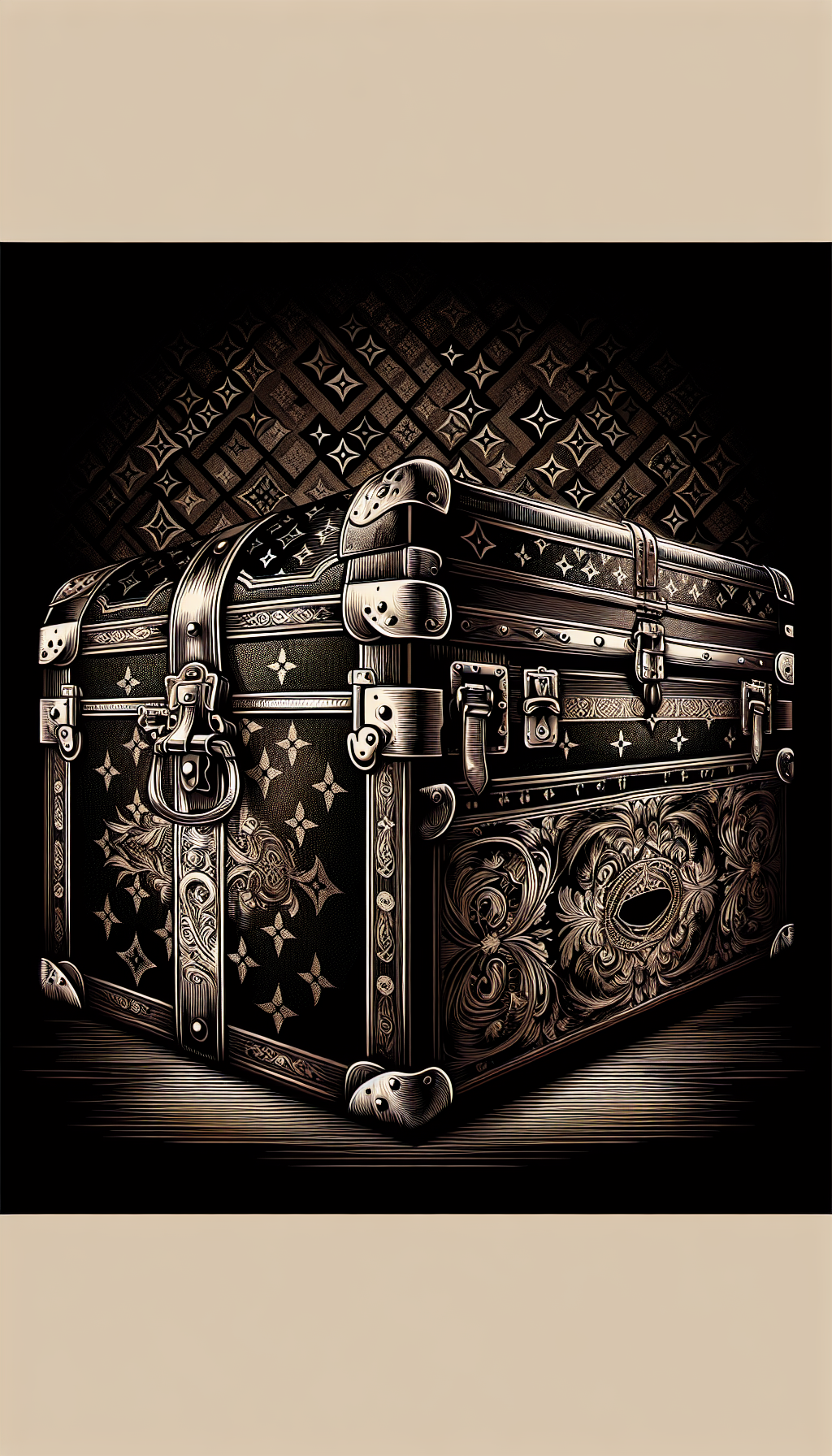Robert Grieve Limited Edition Print
Collectors regularly encounter limited edition prints signed “Robert Grieve,” yet multiple artists share this name across regions and decades. That makes precise attribution—and therefore valuation—far from straightforward. This guide walks you through how to identify, authenticate, evaluate condition, and estimate market value for a Robert Grieve limited edition print without relying on guesswork. It’s designed for appraisal-minded collectors, dealers, and estate executors who need structure, evidence, and market logic.
Start With Attribution: Which “Robert Grieve” Is It?
Because more than one artist signs as “Robert Grieve,” correct attribution is the first—and arguably most valuable—step. A misattribution can swing value dramatically.
Key actions:
- Compare signatures: Note letter formation (especially the R, G, and the terminal “e”), slant, pressure, and spacing. Record whether the signature is graphite, ink, or printed. True signatures sit on top of the ink layer and can show slight sheen or indentation.
- Read the full inscription: Many limited edition prints are signed lower right, numbered lower left (e.g., 34/150), and titled or dated center or opposite the signature. Look for place names, series titles, or dates that narrow the artist and period.
- Identify the medium: Etching, lithograph, screenprint, woodcut, linocut, or digital pigment print (giclée). Artists typically favor certain methods; medium often correlates with a specific career phase and edition practice.
- Look for printer or publisher marks: Blind stamps (embossed chops) or printed imprints can tie the work to a workshop. Record every mark exactly as seen.
- Research comparables: Seek other “Robert Grieve” prints with matching signature style, medium, and date. Aligning your work to a coherent body remains the safest path to attribution.
Tip: Keep an open mind. If the inscription, style, or paper doesn’t align with one known “Robert Grieve,” consider an alternate namesake or a regional artist who used the same name.
Edition Structure: Reading Numbers, Proofs, and States
Understanding editioning tells you how scarce the print is and whether your impression has special status.
- Edition fraction (e.g., 34/150): The top number is your impression; the bottom is the declared size. Smaller editions (20–75) tend to be scarcer and may command higher prices, assuming demand.
- Proofs:
- A/P or Artist’s Proof: Traditionally up to 10% of the edition; often similar value to standard edition.
- H/C (Hors Commerce): Not for commercial sale; sometimes used for exhibition or printer archives.
- P/P (Printer’s Proof), T/P (Trial Proof), E.A. (Épreuve d’artiste): Similar concepts with specific workshop practices.
- BAT (Bon à tirer): The final approved proof that sets the standard for the run; often carries a premium.
- States and variants: Etchings, aquatints, and woodcuts can exist in multiple states; later states show added or altered detail. Verify whether your impression’s state matches descriptions in catalogues or workshop notes.
- Open vs. limited: Some “Robert Grieve” works may exist as open editions or later reproductions—these generally carry lower values than hand-pulled limited editions.
Important: Lower impression numbers (e.g., 2/150) don’t automatically equal higher value. Printing quality consistency is the key; some early pulls are cleaner, while others improve as the printer calibrates.
Medium Matters: Telltale Signs of Technique and Reproduction
Correctly identifying the printmaking method helps distinguish original prints from reproductions and narrows attribution.
- Etching/Aquatint/Intaglio:
- Plate mark: A beveled indentation around the image area from the plate’s pressure.
- Ink sits slightly within the paper’s fibers; tonal aquatint areas can show grainy textures.
- Wove or laid papers often have watermarks; deckled edges may be present.
- Lithograph:
- Absence of plate mark; smooth tonal transitions and crayon-like textures.
- Registration marks sometimes found outside the image in proofs.
- Screenprint (Serigraph):
- Distinct flat color layers; edges can be very crisp.
- Slight ink body you can feel; halftone patterns are unusual unless intentional.
- Woodcut/Linocut:
- Visible relief grain (wood) or uniform relief surface (lino); characteristic carved edges and minor ink variations.
- Digital pigment (Giclée):
- Microscopic dot patterns; perfectly even color and sheen; no plate mark.
- Often used for reproductions of original paintings; check for printed (not hand) signatures.
Red flags for reproductions:
- Signature and numbering are printed, not hand-applied (view with magnification; printed marks will be flat within the same ink matrix as the image).
- Poster stock paper with glossy coatings and no margins.
- Pixelation or moiré from photo-based reproduction.
Original print vs. reproduction:
- Original prints are conceived for the print medium, pulled by the artist or under their supervision, and signed/numbered by hand.
- Reproductions are secondary images of artworks made in another medium; they can be signed, but typically have lower market value.
Signatures, Inscriptions, and Stamps: Decoding the Evidence
A careful transcription of every mark is foundational for authentication and valuation.
- Signature location and format:
- Most limited editions: pencil signature lower right. Compare pressure, rhythm, and letter joins across known examples.
- Monograms or initials may appear in the matrix; these are not a substitute for a hand signature.
- Numeration and titling:
- Fractions: 12/75; “A/P”; “E.A.”; “H/C.” Titles often in quotes; language may hint at origin.
- In-plate inscriptions:
- Printer’s imprints or plates dated within the image are production cues, not ownership marks.
- Blind stamps/chops:
- Raised, uninked embossings usually near margins; record their exact shape and placement. These can verify workshop involvement.
- Certificates of authenticity:
- Useful if issued at the time of sale by a credible publisher. Confirm details match the print (paper, dimensions, edition, title).
Document everything with raking light photos (to reveal embossments) and straight-on shots with a scale and color reference. Even when you consult an appraiser later, meticulous notes can reduce the time and cost of research.
Condition Assessment and Conservation Priorities
Condition is a prime value driver for prints. Common issues and how they affect valuation:
- Light staining and fading:
- Prolonged UV exposure can lighten colors and yellow paper. Fading in one hue (e.g., fugitive reds) is especially value-reducing.
- Foxing and mold:
- Brown spots due to humidity and impurities; treatable by a conservator. Mold needs prompt professional attention.
- Mat burn and acid migration:
- Brown lines where old acidic mats or backing contacted the sheet. Reversible with conservation; deducts value until addressed.
- Tears, creases, and handling dents:
- Edge tears into the margin are less severe than image-area losses. Closed tears might still be visible under raking light.
- Abrasion and scuffing:
- Surface loss from contact or over-cleaning; screenprints and aquatints are especially vulnerable.
- Trimming:
- Loss of margins, deckle, plate mark, or blind stamps reduces value and can complicate authentication.
- Tape, hinges, and residues:
- Pressure-sensitive tapes stain over time. Heat-set or water-activated adhesives can be risky to remove; leave to professionals.
Best practices:
- Use archival mats (100% cotton or lignin-free, buffered as appropriate).
- Hinge with Japanese tissue and reversible adhesive.
- Frame with UV-filtering glaze and provide an air gap from the image area.
- Store flat in archival folders in a stable, climate-controlled environment (generally 40–55% RH, about 18–22°C).
Conservation impacts value positively when properly documented. Keep before/after photos and conservator reports.
Provenance, Market Signals, and Valuation Logic
Valuation is the intersection of attribution confidence, edition structure, condition, and market demand.
- Provenance:
- Original invoices, gallery labels, exhibition history, or correspondence with the artist/publisher bolster credibility and liquidity.
- Labels on frame backs can be significant—photograph before reframing.
- Market comparables:
- Seek recent sales of the same print (identical title and edition) in similar condition.
- If none exist, use comparable works by the same artist: similar date range, medium, subject, and edition size.
- Edition size and desirability:
- Scarcity can help, but demand rules. A 50-edition image in low demand may trail a 200-edition image with strong collector interest.
- Geographic market:
- Artists with regional followings can sell better in certain cities or countries; adjust expectations accordingly.
- Appraisal approaches:
- Fair Market Value (FMV): Likely auction price between willing buyer/seller.
- Retail Replacement Value (RRV): What it would cost to replace from a dealer; higher than FMV.
- Insurance vs. estate vs. donation contexts require different standards and documentation.
Selling options:
- Auction: Transparent and time-bound; fees apply; best when demand is demonstrated.
- Dealers/galleries: Potentially higher asking prices, longer time horizon.
- Private sale: Discreet; relies on your network and documentation quality.
When in doubt, commissioning a written appraisal from a qualified specialist with print expertise (and familiarity with the specific Robert Grieve you’ve identified) is worth the investment.
Practical Checklist: Robert Grieve Limited Edition Print
- Record exact title, signature, date, and edition notations.
- Identify the medium (etching, lithograph, screenprint, woodcut, digital).
- Measure sheet and image size; note margins, plate marks, and deckle edges.
- Photograph front/back and details (raking light for embossments).
- Note any stamps, seals, or printer/publisher marks.
- Evaluate condition under diffuse and raking light; list all issues.
- Verify hand-applied signature/numbering vs. printed facsimiles.
- Research auction and dealer comparables for the same or similar works.
- Consolidate provenance: receipts, labels, emails, certificates.
- Decide purpose: insurance, sale, estate, or collection management—and select the appropriate valuation standard.
Short FAQ
Q: How can I tell if my Robert Grieve print is an original print or a reproduction? A: Check for a hand-signed signature and hand-applied edition number in pencil, the appropriate physical cues of the medium (e.g., a plate mark for etchings), and the absence of uniform printed signatures. Under magnification, original prints show medium-specific traits; reproductions display even dot patterns and no plate embossing.
Q: Does the impression number (e.g., 2/150) significantly affect value? A: Not by itself. Printing quality and condition matter more. A mid-sequence impression in excellent condition can outperform an early-numbered print with light damage or uneven inking.
Q: What does “A/P” or “E.A.” mean on a Robert Grieve print? A: A/P stands for Artist’s Proof (English), and E.A. stands for Épreuve d’artiste (French). Both refer to impressions outside the numbered edition, historically for the artist’s use. Their value is typically similar to standard edition copies, sometimes slightly higher if demand is strong.
Q: Should I remove my print from an old frame? A: If you suspect acidic materials, foxing, or concealed labels, have a professional or conservator unframe it to avoid damage and document any findings. Do not peel tapes or lift hinges yourself.
Q: How do I get a reliable valuation? A: Assemble documentation (photos, measurements, inscriptions, provenance, condition notes) and consult a qualified appraiser who specializes in prints. Provide any comparables you’ve found; the appraiser will refine and formalize the analysis for your specific market and purpose.
By proceeding step by step—attribution first, medium identification second, followed by condition, provenance, and market—you’ll bring professional-grade clarity to a Robert Grieve limited edition print. That clarity translates into better stewardship, more accurate insurance coverage, and stronger outcomes when you decide to sell or donate.



